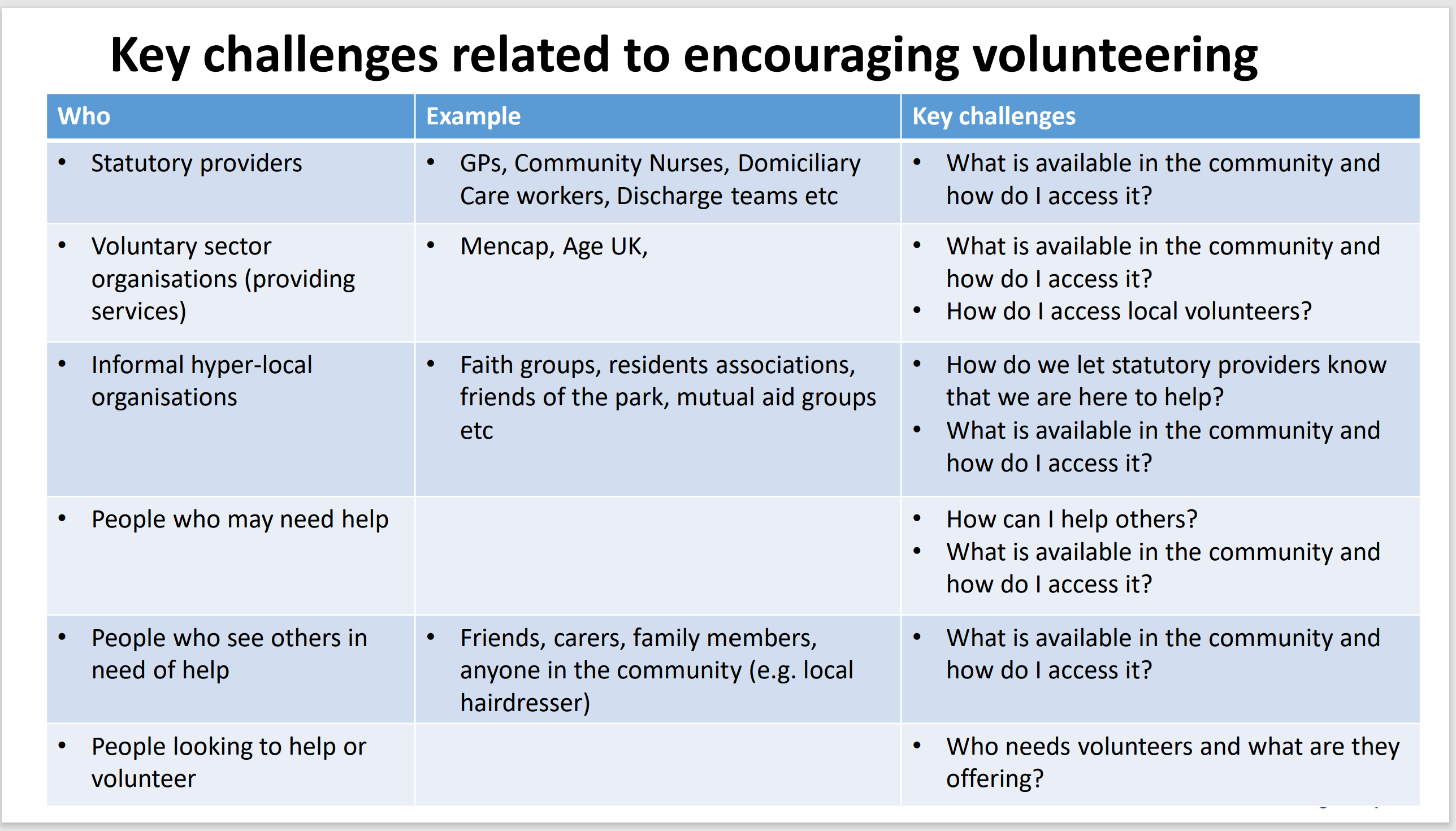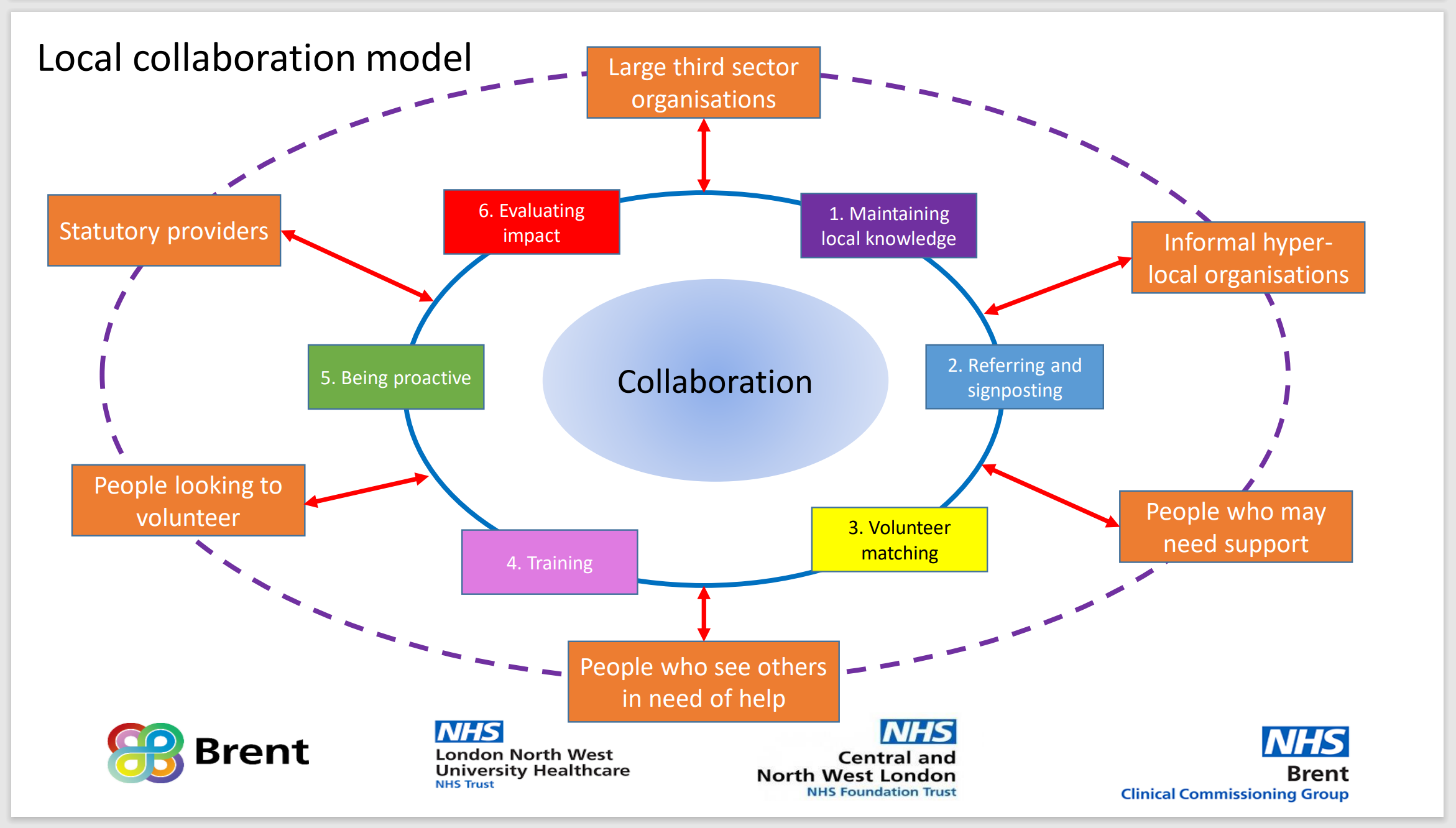Collaboration model - Volunteering in wellbeing and mental health
Tags: Toolkit
17th November 2021
0 Likes

Hypothesis underpinning the model
“By collaborating we can stimulate far more volunteering, in our local communities, in support of wellbeing and mental health. In doing so we can identify and far more effectively support people that typically, providers have found hard to reach”
Our aim
To evidence, through the work in Church End and Alperton, that we can build local mental health and wellbeing collaboration model that is underpinned by the following principles:
1. Identify and keep track of local services and maintain awareness of the community’s needs
2. Provide effective pathways for accessing services and community based support
3. Connect people wanting to volunteer with opportunities to volunteer
4. To “equip” volunteers through access to resources and training
5. Be proactive in terms of identifying people who may need support
6. To keep track of the impact we are having

What is the collaboration model?
It is a collective aspiration to deliver the capabilities that are identified by local people, as being needed locally, that will ensure that people from communities, that have often previously not been heard, are now heard and effectively supported.
It is about building on what is available locally and therefore the form that the collaboration takes may, and will be, different in different communities. In every case though it will be underpinned the same principles.
What does the collaboration model do ? (1)
Acts as the local volunteer matching hub
- It is where you can come if you are looking for local volunteers or want to volunteer locally
Refers and signposts
- It should create the ability to take referrals from multiple organisations and following a brief assessment signpost to other organisations
- Needs to bring together (and augment if needed) the signposting and referral capability of the local Social Prescribing Link Workers (SPLWs) , Community Champions and Health Educators (and others)
Maintains and makes available knowledge of what is needed by the community and what is available in terms of services
- An up to date and accessible database of services and events that happen locally - key need is to understand culturally appropriate services that are available to people with protected characteristics that in the past have suffered from health inequalities
What does the collaboration model do ?(2)
- To be responsible for upskilling local people
- Formal training for volunteers
- What is available free online
- What training are others offering that can be accessed
- Developing bespoke training where needed
- Awareness raising amongst the population – this is what we’ve established and this is how to signpost people. This is about encouraging everyone in the community to keep a look out for people they think might need help, and how they can signpost to that help
- To coordinate the proactive contact with people who may be socially isolated and lonely
- To evaluate impact
For the full document please download the attached PDF
You may also be interested in:
- Rapid review of Brent emotional wellbeing and mental health Hyper Local Forums
- Wellbeing and Mental Health Church End - Survey results
- Wellbeing and Mental Health Alperton - Survey results
If you wish to share your knowledge on the Helpforce Connect, please visit this page (please note: the button "Contribute your resource" is only visible to logged in members).
